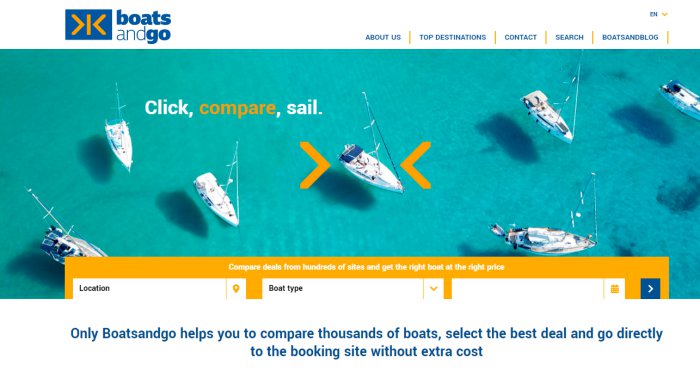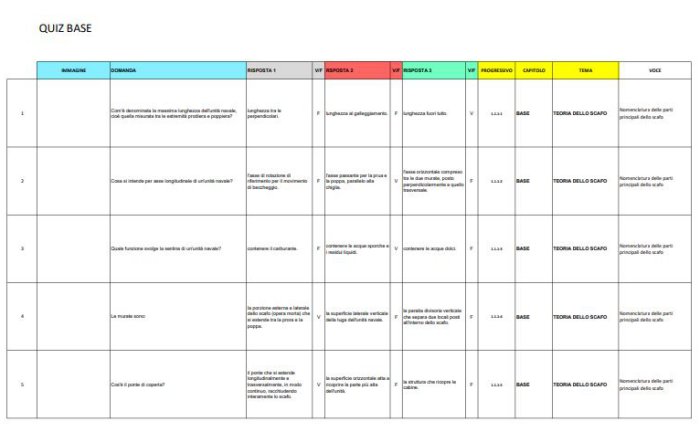On June 1st, the new rules of the reform that affected the examination for the issue of the nautical license in Italy came into force: the novelties concern not only the theory but also the correspondence exercises.
The reform, wanted by the Minister of Infrastructures and Sustainable Mobility Enrico Giovannini has profoundly innovated the examination, passing from being based on notions and mnemonics, to an approach more responsive to the needs of modern yachting.
In this article:
• Nautical license, what you need to know
• The new exam, what changes
• A unique theoretical test
• Differences from the old exam
• The trade associations and the new exam
Nautical license: what you need to know.
The news on the exam, which had been presented at the Genoa Boat Show 2021, the most important Italian event on pleasure boating (www.salonenautico.com), represent a small revolution for sea lovers, a change that was expected by a lot of time.
In recent years we have witnessed the boom in boating holidays and many charter and boat rental companies have responded to this trend by expanding the offer of rental with a skipper, that is a professional figure with the qualifications to conduct boats.
On our portal www.boatsandgo.com, thanks to the search filters, you can find many rental offers with or without skipper.
But it must be borne in mind that in Italy the nautical license is mandatory:
- for boats that sail over six miles, even if they are less than 24 meters
- within six miles, the boat license is mandatory for anyone sailing with an engine over 30 kw .

The new exam: what changes.
More focused on practical navigation and less on theoretical knowledge of boats with current engines and sailing equipment.
1. The questions on the Admiralty anchor, now little used, disappear from the examination, replaced by questions on the use of modern anchors, on anchoring and un-anchoring maneuvers, on the characteristics of modern anchors with regard to safeguarding the seabed.
2. Not even the signaling with flags between ships, the nomenclature of the individual parts of the wooden hulls, the elements of naval physics, the structure of the merchant ships and the questions on the metacentre center of gravity and displacement of the "cargo" will no longer be examined.
3. Questions related to propeller and rudder kinematics have given way to questions about the practical use of the boat .; those on the parts of the motors limited to general operation and small failures that can be solved without the need for professional and technical intervention.
4. The meteorology and tides section was also limited, excluding elements of atmospheric physics.
5. New and simpler questions and with the support of images and graphics on mooring and unmooring, on navigation in crowded bays, on entering and exiting ports, on navigation in protected marine areas and on safety equipment.
6. In the Sailing section, no more questions about sailing dinghies and equipment that are no longer present on today's boats, replaced by questions about those that have become common on cruise boats and questions about navigation in bad weather.

A unique theoretical test.
The theory test, valid for all types of driving license, consists of 20 multiple choice questions; three alternative answers of which only one is correct. At least 16 correct answers are required to pass the exam.
For the Sailing License, there are 5 additional single-answer questions that can be overcome with at least 4 correct answers.
For the driving license within 12 miles it is necessary to correctly answer the questions on the correspondence, 5 questions with single answer: the exam is passed with 4 correct answers.
For the driving license over 12 miles, 4 questions on the correspondence elements.
Differences from the old exam
• Those who, having passed the written test, do not pass the practical one (for the two times allowed) can now take the practical test again within one month without having to repeat the theoretical part as well.
• Candidates, within the terms of validity of the application for examination, can repeat only the written tests that have not been passed or, if they have not passed the questions on the correspondence for the license without limits, they can continue the exam to obtain the license within the 12 miles.
• Confirmed the possibility for those who do not pass the sailing exam, to continue the exam to obtain the license for motor boats.
What do the trade associations think of the new exam?
The news was welcomed by the national associations of the category Confindustria Nautica, Confarca (Association of nautical schools) and Unasca who had been waiting for such a reform for a decade.
These associations collaborated in the implementation of the new examination thanks to the discussion table set up by the Director Maria Teresa Di Matteo, signatory of the Decree.
Confindustria Nautica reiterated in a note how necessary this reform was, in fact "the exam was based on a notional and mnemonic approach, far from the real pleasure boating, and had produced the constant decrease in the issue of new nautical licenses, literally halved by the 1998 to 2019 ". According to its President, Saverio Cecchi, this reform could be an opportunity to encourage the approach of new boaters to boating because the new quizzes will require a less notional preparation and more focused on awareness and attention to safety that must be had at sea.
Paolo Colangelo, President Confarca , underlines how "The reform gives us a more concrete proof and devoid of the elements of merchant shipping, which made it unnecessarily difficult" statement confirmed by Antonio Datri , President of Unasca , (National Union of Driving Schools and Automotive Consultancy Studies).
